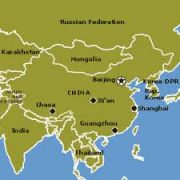
China has reactivated its territorial expansion plans; this time through its e-passport map. From, Japan to India, Asian neighbors of China are concerned about the maps depicted in the new Chinese e-passports. These maps indicate the territory of its neighbors as Chinese territory.
Many analysts see that time has reached for small Asian neighbors to face the growing Chinese territorial adventurism as a fearful realty. China is recently inventing new ways to express its expansive territorial ambitions like World War II Germany; and the map issue is the last one among them.
The rising Asian power is recently tightening its repressive administrative measures in the occupied regions of Tibet and Xingiang. Beijing is filling these two provinces with the mainland Hans ethnic people amidst protest from the indigenous people. The move is to alter the ethnic composition of the occupied territories in its favor.
Strategic analysts note that China may adopt more expansive strategies in the wake of fast decline of the US in the global arena. Its ambitions are to expand China beyond the natural regions of the Hans. The tribe constitute to eighty percent of the Chinese population or nearly one sixth of the world population.
People of Tibet and Xinjiang doesn’t comes under the traditionally Hans dominated homogenous Chinese identity. Besides, unlike India, China is not considered as a country comprising of different types of ethnic people. Hence its expansion plan will make it more and more alien power because of its cultural and anthropological dissimilarity. China should learn that its dream to expand outside the Mandarin Land and into the land of the Mediterranean people is overambitious. China should study its lesson from its predecessors -the Nazy Germany and the communist USSR.










